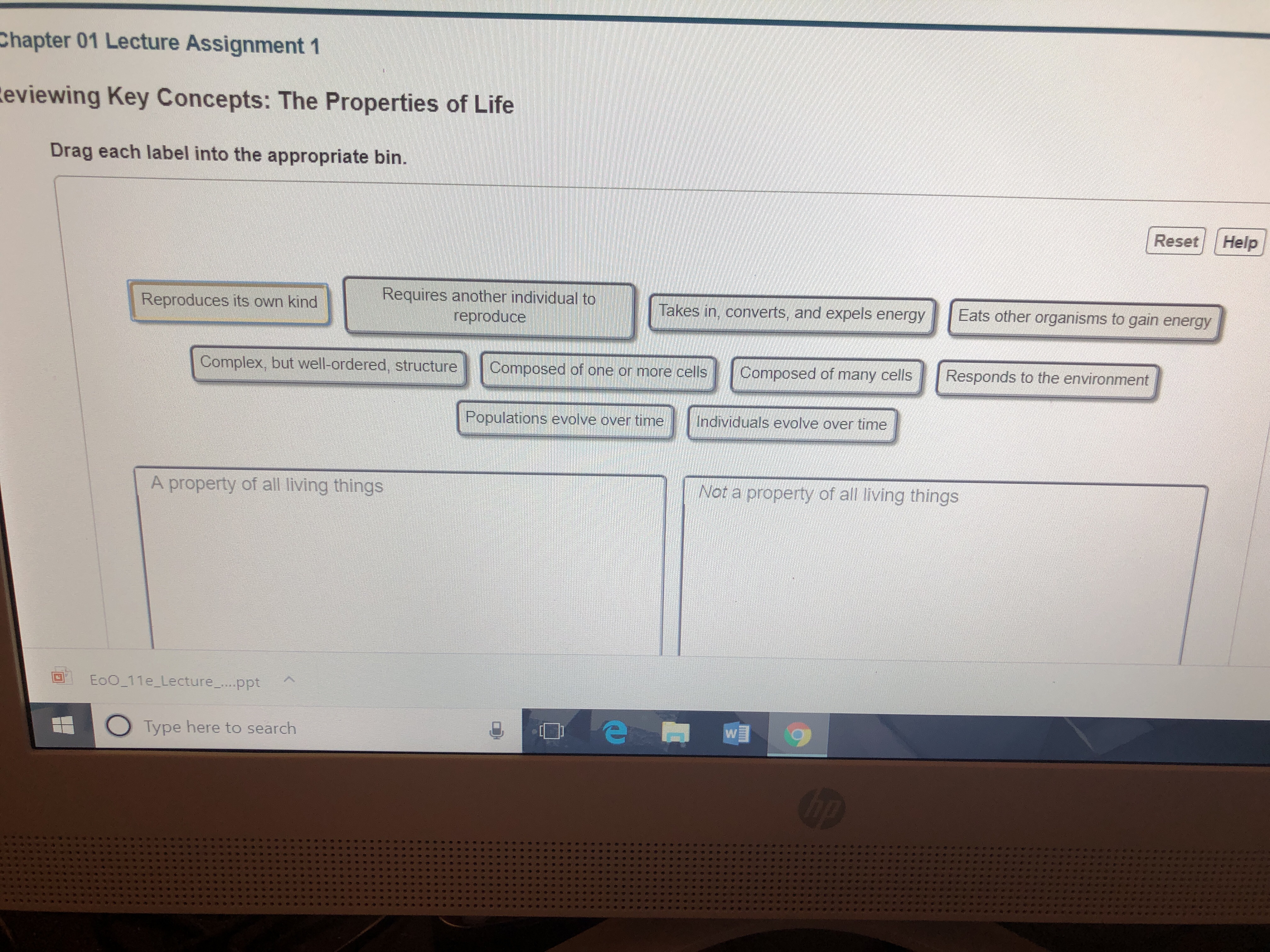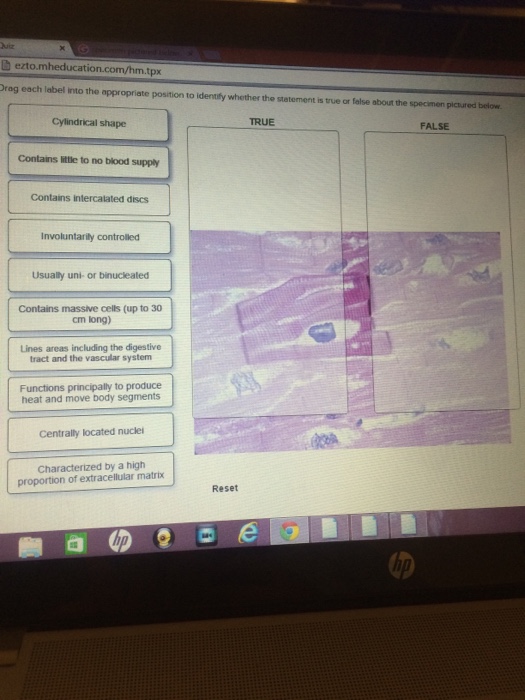42 drag each label into the appropriate position to identify which chemical classification it describes.
Solved Drag each label into the appropriate position to - Chegg Anatomy and Physiology questions and answers. Drag each label into the appropriate position to identify which chemical classification it describes. Lipid-Soluble Require second messenger systems Directly affect transcription rates Elicit responses almost immediately Eicit responses over several hours to days Pass directly through the plasma ... 2.5 The Periodic Table - Chemistry - opentextbc.ca The elements are arranged in seven horizontal rows, called periods or series, and 18 vertical columns, called groups. Groups are labeled at the top of each column. In the United States, the labels traditionally were numerals with capital letters. However, IUPAC recommends that the numbers 1 through 18 be used, and these labels are more common.
DOCX Purdue University - Indiana's Land Grant University On the lab tables you will see 12 different samples of matter that need to be classified. Your job is to classify each of the 12 samples of matter. First decide whether each type of matter is a "pure substance" or a "mixture" in column 1. If you decide "substance" then in column two you decide between "compound/element" in column 2.

Drag each label into the appropriate position to identify which chemical classification it describes.
[Expert Answer] Drag the tiles to the boxes to form correct pairs ... Drag the tiles to the boxes to form correct pairs. Match each state of matter with the statement that best describes it. plasma Particles move past each other freely but do not go far apart. gas Particles are so hot that electrons are stripped from atoms. liquid It retains its shape regardless of the shape of the container. solid It expands to fill the volume of the container. ReaderUi ReaderUi PDF CLASSIFICATION OF ROCKS AND DESCRIPTION OF PHYSICAL ... - usbr.gov The classification for igneous, sedimentary, metamorphic, and pyroclastic rocks is shown on figures 4-1, 4-2, 4-3, and 4-4, respectively. These figures are condensed and modified slightly from Travis' classifications, but the more detailed original classifications of Travis are acceptable. Figure 4-5 or appropriate American
Drag each label into the appropriate position to identify which chemical classification it describes.. A&P II Final (BIO 139) Flashcards | Quizlet Drag each label into the appropriate position to identify which chemical classification it describes. Place the following events in the order they occur as a non-steroid hormone activates its target cell. After Eating A Meal Blood Sugar Levels Quizlet - DiabetesTalk.Net Drag each label into the appropriate position to identify which chemical classification it describes. 1. Elicit responses over several hours to days 1. Pass directly through the plasma membrane* Two or more hormones act together to produce an effect that is greater than the sum of their separate effects. Login with Ellucian Ethos Identity - University of Louisiana at Lafayette Login with Ellucian Ethos Identity. This secure site uses UL Lafayette credentials to allow students, faculty and staff to access various systems used on campus, such as Ulink, Moodle, and Webmail. I forgot my password | Activate my account. [Solved] Please see an attachment for details | Course Hero Answered step-by-step Please see an attachment for details Image transcription text Drag each label into the appropriate position to identify which chemical classification it describes. 20 Steroid Hydrophobic Require a transport protein Elicit responses Hydrophilic over several hours to days Utilize CAMP DAG, or IP3 Bind to ... Show more ...
Metals, Nonmetals, and Metalloids of the Periodic Table Updated on January 28, 2020. Elements of the periodic table are grouped as metals, metalloids or semimetals, and nonmetals. The metalloids separate the metals and nonmetals on a periodic table. Also, many periodic tables have a stair-step line on the table identifying the element groups. The line begins at boron (B) and extends down to polonium ... ENDOCRINE WORKSHEET Flashcards | Quizlet Click and drag each hormone or scenario into the appropriate stage of the stress response. Hormones are chemical messengers that are transported by the bloodstream and stimulate physiological responses in cells of another tissue or organ. Choose the accurate statement (s) about how communication by the nervous and endocrine systems differ. WHMIS 2015 - WHMIS Program : OSH Answers Under WHMIS, employers who produce hazardous products for use in their own workplaces have the duty to assess the hazards, classify the hazards of the products, and provide proper labels and SDSs. Under general occupational health and safety laws, employers are also responsible for safe storage and use of hazardous products. C. Inspections PDF BIO PLACEMENT TEST REVIEW QUESTIONS Review 1: Answer Key on page 11 B) Each type of body cell contains only the genetic information it needs to be that type of cell. C) The genetic information in almost all of your body cells is identical. D) The genetic information in your body cells changes in a predictable manner as you grow and develop.
BYJUS BYJUS Solved Drag each label into the appropriate position to - Chegg Expert Answer. Who are the experts? Experts are tested by Chegg as specialists in their subject area. We review their content and use your feedback to keep the quality high. 100% (38 ratings) Transcribed image text: Drag each label into the appropriate position to identify which chemical classification it describes. Know Your Hazard Symbols (Pictograms) | Office of Environmental Health ... Each pictogram covers a specific type of hazard and is designed to be immediately recognizable to anyone handling hazardous material. In addition to pictograms, labels are required to include a signal word ("danger" or "warning"), a brief hazard statement and a precautionary statement outlining ways to prevent exposure. Pictograms and Descriptions PDF DNA Review Packet Key to Study - Allegany-Limestone High School The code is read three "letters" at a time, so that each "word" is three bases long and corresponds to a single amino acid. Each three-letter "word" in mRNA is known as a codon. Some codons serve as "start" and "stop" signals for protein synthesis. Translation Ribosomes use the sequence of codons in mRNA to assemble amino acids into polypeptide
6.2 Bone Classification - Anatomy & Physiology Short Bones A short bone is one that is cube-like in shape, being approximately equal in length, width, and thickness. The only short bones in the human skeleton are in the carpals of the wrists and the tarsals of the ankles. Short bones provide stability and support as well as some limited motion. Flat Bones
CH103 - Chapter 8: The Major Macromolecules - Chemistry Major types include fats and oils, waxes, phospholipids, and steroids. Fats and oils are a stored form of energy and can include triglycerides. Fats and oils are usually made up of fatty acids and glycerol. Proteins are a class of macromolecules that can perform a diverse range of functions for the cell.
CHE 120 - Introduction to Organic Chemistry - Textbook 1. Identify each sugar by its common chemical name. a. milk sugar. b. table sugar . 2. Identify each sugar by its common chemical name. a. cane sugar. b. malt sugar . 3. For each disaccharide, indicate whether the glycosidic linkage is α or β. a. b. 4. For each disaccharide, indicate whether the glycosidic linkage is α or β. a. b. 5.
Earth Science Rocks and Minerals Review Quiz - Quizizz answer choices granite, rhyolite, sandstone, hornfels shale, scoria, gneiss, metaconglomerate conglomerate, gabbro, rock salt, schist breccia, fossil limestone, bituminous coal, siltstone Question 8 30 seconds Q. The table shows the physical properties of nine minerals. Which mineral is commonly found in granite? answer choices quartz olivine
4 Types of Chemical Bonds - dummies Ionic bond. Ionic bonding involves a transfer of an electron, so one atom gains an electron while one atom loses an electron. One of the resulting ions carries a negative charge (anion), and the other ion carries a positive charge (cation). Because opposite charges attract, the atoms bond together to form a molecule.



Post a Comment for "42 drag each label into the appropriate position to identify which chemical classification it describes."